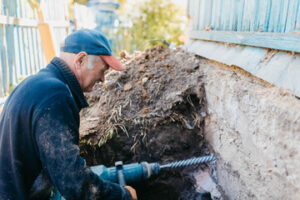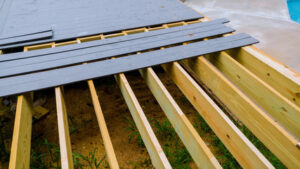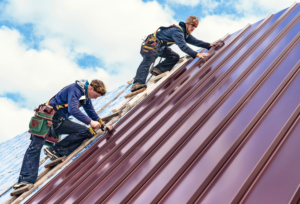Electricians MT Pleasant MI are the unsung heroes who ensure that our homes, businesses and industrial facilities have reliable power. They work in a demanding trade that requires a keen attention to detail and the highest standards of safety.

Whether you’re an apprentice learning the ropes, a journeyman taking on new challenges or a master overseeing intricate projects, there are many rewards to being an electrician.
Electricians install and repair electrical wiring and equipment in homes, factories, buildings, and structures under construction. They also inspect electrical systems and wiring to identify safety hazards and determine if they conform to relevant codes. They use both hand tools and testing equipment in their work, and they must be able to communicate effectively with other electricians and design professionals.
Residential electricians work on homes and apartment buildings. They must be familiar with local and national building codes and regulations to ensure compliance with local electricity standards and to prevent fires. They often need to be able to read blueprints and technical diagrams to understand the installation process. They must also have excellent problem-solving skills to fix electrical problems.
Commercial electricians are in charge of installing wire systems for lighting, security, and other electrical equipment. These technicians must interpret architectural drawings and blueprints to complete the job on time and within budget. They may need to perform maintenance tasks, so they must be able to keep track of electrical repairs and purchase supplies as needed.
Industrial electricians work in manufacturing facilities, hospitals, and other large organizations. These technicians must be familiar with all aspects of electrical systems and equipment in these complex environments. They must be able to work with different types of machinery, and they must be able to troubleshoot complex issues that could affect the productivity of the plant.
Line installers work on high-voltage power lines. These professionals must be able to climb and repair high-tension wires hundreds or thousands of feet above the ground. They must also have extensive safety training to ensure that they can be rescued in case of an emergency.
The qualifications for becoming an electrician include a high school diploma or equivalent and completion of an apprenticeship program or vocational training. Most states require licensing to work as a journeyman electrician, and a few offer additional certifications that can enhance career prospects. Other important considerations are communication skills, knowledge of the National Electric Code and state and local building codes, and familiarity with energy-efficient equipment and materials.
Education and Training Requirements
Whether it’s blue-collar or not, the career of an electrician is a demanding one that requires a certain amount of education and training. Most states have their own set of requirements for becoming an electrician, with the most common path including vocational school, a 4-5 year apprenticeship program, and state licensing. However, there’s also a growing recognition for the importance of continuing education and advanced training in the industry.
While the majority of electricians start their careers through a vocational school or apprenticeship, some choose to pursue an associate degree in electrical technology at a community college. While the programs may take a little longer than those of a vocational school, they still provide a strong foundation in the basics of electrical theory and practical skills. Many of the courses taught in these programs include blueprint reading, residential wiring, and AC circuitry.
As electricians seek to enhance their skills and expand their knowledge base, they may pursue a minor in a related field that complements their degree program. For example, a minor in computer networking can help Electricians learn about the complexities of network infrastructure. This can be important for electricians who install smart systems and Internet of Things devices in modern buildings.
In addition, a degree in industrial technology can provide the foundation for an electrician interested in pursuing a career in manufacturing and industrial work. This type of degree includes coursework in industrial automation, safety regulations, and quality control.
Once students complete their educational and apprenticeship training, they must obtain a license in order to begin working on their own. The exact requirements vary by jurisdiction, but in most cases, a journeyman electrician must pass an exam and have a minimum of 2,000 hours of on-the-job experience. Some states also require a certain number of continuing education credits in order to renew their licenses. To become a licensed journeyman electrician, residents can look for available training programs through trade schools and unions, or enroll in an apprenticeship program.
Working Conditions
The working conditions for electricians vary based on their specialization and the nature of their work. They may work in cramped spaces or in tight areas, and they often travel between job sites to carry out their duties. They may also be exposed to hazardous materials or dangerous equipment. The physical demands of the profession are high and include bending conduit, climbing ladders, lifting heavy objects, and standing for extended periods. Electricians may also be required to wear personal protective equipment such as hard hats, gloves, and tethers.
A residential electrician typically works on electrical wiring, outlets, and switches in houses, apartments, and other residential buildings. They can also install electrical appliances and lighting fixtures in these buildings. They may collaborate with architects, engineers, and contractors to design electrical systems for new construction or renovation projects. A residential electrician can also be called on to repair existing electrical systems and troubleshoot issues.
An industrial electrician focuses on electrical power distribution systems in factories, warehouses, and other large facilities. They may use a variety of hand tools, including wrenches and drills. In some cases, they may also need to climb or crawl to reach difficult-to-reach places. In addition to installing and maintaining industrial electrical systems, an industrial electrician can also be responsible for reading blueprints and other documents to prepare cost estimates and other documentation.
Another specialty area for electricians is renewable energy systems. These include solar, wind, and geothermal systems. In this field, electricians can be employed by utilities or private companies. They can also be self-employed.
The demand for electricians has increased due to increased construction activity and the need for routine maintenance. This increase in demand has led to higher salaries for electricians.
Salary
Whether they’re squeezing into tight spaces, handling high voltage or ensuring client satisfaction, electricians play a critical role in our day-to-day lives. They deserve to be paid a fair wage for their work.
Electricians’ salaries vary by state and region. Those in larger cities tend to make more than those in smaller communities, and the cost of living can also influence electrician salaries. Additionally, experience plays a role in the amount that electricians make. Those with more years of experience usually earn more than those who are just starting out.
For example, a brand-new apprentice might start out making $72,600 per year, while an experienced journeyman in the same city might make closer to $90,000. Those in states with higher costs of living will also likely earn more than those in lower-cost states.
Another way that electricians can increase their salary is by getting additional certifications and specializations. This will allow them to work on different types of components, which could lead to more job opportunities and a higher pay rate.
As a union electrician, Martinez says that she enjoys the stability that comes with her job and the benefits it provides. She also appreciates the transparency of her wages, which gives her peace of mind about her paycheck. In addition, she believes that having health insurance and retirement benefits is an important part of any career.
Those looking to pursue a career as an electrician should make sure that they are passionate about the trade and willing to invest in it. In addition, they should seek out continuing education classes and other learning opportunities to stay current on the latest trends in their field. Doing this will make them a valuable asset for their employers and will ensure that they can take on more challenging projects in the future.
One last piece of advice that aspiring electricians should heed is to find a company that encourages further training and will offer them more opportunities to grow within the business. This will not only help them feel more valued as an employee, but it will also give them the opportunity to learn new skills that they can bring back to their employer and make them even more valuable.








